Eight other men and one woman were chatting or finding chairs, opening laptops. They were all in their twenties or thirties, dressed in either suits or sport coats with coordinated slacks. Neckties had reappeared: some wore ties knotted at the throat, others had slung their ties over their shoulders, like ribbons, to be tied when they went public. They stopped chatting to check out the guayabera shirts and shorts on the marshals.
One of the agents looked at Bob’s knees, and then Lucas’s, and said, “You’re the marshals.”
Bob said, cheerfully, “Yup,” and pulled out a chair, sat down. He didn’t have his gear bag, but he winced and said, “Ouch, goddamnit.” He reached under his shirt, pulled out his .40-caliber Glock and dropped it on the table with a clunk. “Hate it when it pokes me in the gut, know what I mean?”
Lucas bit his lip and sat down himself, turned toward Weaver, and said, “We’re heading to the boat show right after the briefing. We thought shorts would be the way to go.”
“What’s over there?” one of the agents asked.
“Boats,” Bob said. “And the Coast Guard guy who shot the smuggler. We wanted to start at the beginning.”
Weaver nodded and said, “If you want, go ahead. If you read our interviews with him . . .”
“We both have,” Lucas said. “Good interviews, but I want to hear him talk.”
Weaver finished with the stack of papers he’d been sorting and said, “Let’s everybody sit down.” When everybody was seated, Weaver poked a pencil at Lucas and said, “The dark-haired gentleman is Lucas Davenport, the bruiser over here is Bob Matees. I have bios for both of them, if anyone is interested. Don’t let the stupid shirts and shorts fool you: Davenport closed out eighty murders over twenty-five years with the Minneapolis Police Department, the Minnesota Bureau of Criminal Apprehension, and the Marshals Service. In September, he killed the 1919 sniper. Matees is assigned to the Service’s SOG and he’s the guy who took down the New Orleans cannibal in that firefight in Nevada last summer. Davenport was there for that one, too.”
“Shooters,” one of the men said, with a skeptical tone.
Lucas might have curled a lip as he nodded. “Somebody’s got to do the heavy lifting.”
“Okaaaay . . .” Weaver said. To Lucas and Bob: “You weren’t here Saturday for our end-of-week round-up session, but if you’ve read our latest info packets, you’re up to date, because last week and the week before that, we got jack shit. The Miami-Dade cops and Lauderdale cops have mostly pulled out of the task force, we’ve got one guy from the Broward sheriff’s department who for some reason is still with us, maybe for the donuts, although he seems to be running late today, and over here . . .” He pointed his pencil at the woman. “. . . We have Kelly Taylor, a warrant officer from the Coast Guard’s Investigative Service. She represents Homeland Security.”
His pencil did a 180-degree sweep of the remainder of the table: “The rest are FBI. You’ll learn their names quickly enough. Now: let’s figure out what we’re all doing.”
The answer to that question, Lucas thought, a half hour into the meeting, was, not much. The task force seemed to be operating on hope, looking for a break from increasingly unlikely sources.
“Our problem,” Weaver explained to Lucas and Bob, “is that the group doing the drug import is small and tight, and may not have lit up any law enforcement screens before now.”
“I read that the guy who was killed was some minor Miami hoodlum,” Lucas said.
“Yeah, he was. He took money from anyone who wanted some rough work done, he wasn’t part of any specific organization. His main qualification is that he liked boats. In fact, he usually worked the boat show you’re going to, and the Miami Boat Show, which is in a couple of months. We think he was hired to run the boat. Like the diver, we think he had that one special ability, but nothing to do with the purchase and resale of the heroin. If it is heroin we’re talking about.”
“And the diver . . .”
“We thought that would be a weak point. If this gang is doing what we think they’re doing, they need professional divers to work with them. Or they need well-trained divers, anyway. Guys who can go deep,” Weaver said. “We worked that hard for the first month after the shootings and came up dry. We think it’s possible that the divers involved were brought in from the outside for this one specific job and kept their heads down while they were here. No hanging out at diver bars. Now they may have gone back to wherever they came from.”
“How do you know that they’re not done with this?” Lucas asked. “The dope guys. That they might not have walked away from it, or have finished picking it up?”
Weaver pointed his pencil at one of the suits, one with a knotted tie, who said, “We’ve talked to half the goons in South Florida, in jail and out, and there’s a persistent rumor that most of the product is still out there. Millions of dollars’ worth. Tens of millions. But, it’s rumor.”
Bob: “Nobody can find where the dope was dumped?”
Weaver’s pencil went to the Coast Guard. Taylor said, “Our enlisted man, the one who spotted the activity . . .”
Bob: “The one we’re going to talk to.”
“Yes. He was in his own boat, a private boat, south of Pompano Beach . . . if you know where that is . . .”
“I looked at it on a map, so I have an idea,” Lucas said. “Up north of here, not too far.”
“Yes. His fish-finding gear has GPS, but was an old unit and didn’t have the ability to record his track. We would kill for that. He believes, but he’s not sure, that the other boat was southeast of him, but he’s not positive of that, because the coastline isn’t exactly north and south. The other boat could have been dead south or a bit southwest. He’s also unsure of the distance between them, because it was always changing. Less than a mile, but at least a quarter mile. With two moving boats on the water without landmarks, sometimes moving in opposite directions and at different speeds, it’s hard to tell. Altogether, we think the diver was somewhere in an arc a half mile wide, but as much as two or even three miles north to south, covering a series of reefs off the coast, from fairly shallow and easily dived, to depths that would be at the extreme limit of what a scuba diver might want to do.”
“Doesn’t sound like that huge an area,” Bob ventured.
“There’re almost forty-two million square feet in one and a half square miles,” the woman said. “From Petty Officer Barney Hall’s description, the men were loading dark-colored, gray or black, bucket-sized containers off their boat before it burned. We suspect that they may have been twelve-inch or fourteen-inch PVC pipes sealed at the ends, each probably eighteen inches long. We have seen those kind of containers before. Lying on their sides, each pipe would show an area of about one and a half square feet. Trying to find a dark object that small in an area of forty-two million square feet is . . . difficult, to say the least. We’d have to be very lucky to find one.”
“Are you still trying?” Lucas asked.
She shook her head. “No. We had a submersible looking for two months and never found a single pipe. If they’re even down there. There are currents, there’s rough terrain, and the bottom gets churned up and visibility can be down to almost nothing. The pipes may very well be covered with sediment, so we could roll right over one and never see it.”
“All of which is somewhat beside the point,” Weaver said. “We know that something may be down there, or maybe there isn’t, but we’re interested in the men who did the shooting, not so much the dope itself. We’ll take the dope if we can get it, but what we really want are the killers.”
Читать дальше
![Джон Сэндфорд Ocean Prey [calibre] обложка книги](/books/384313/dzhon-sendford-ocean-prey-calibre-cover.webp)
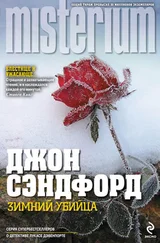


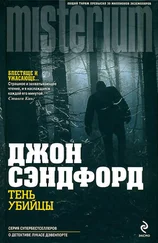
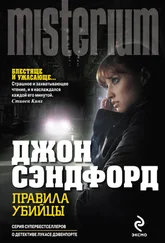
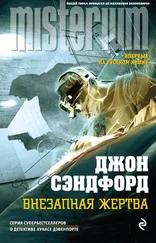
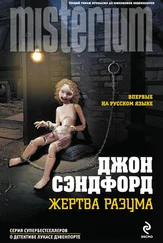
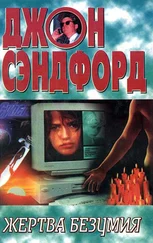

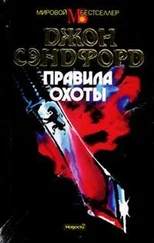
![Джон Ирвинг - Viename asmenyje [calibre]](/books/384315/dzhon-irving-viename-asmenyje-calibre-thumb.webp)
![Джон Ирвинг - Vandens metodas [calibre]](/books/384316/dzhon-irving-vandens-metodas-calibre-thumb.webp)